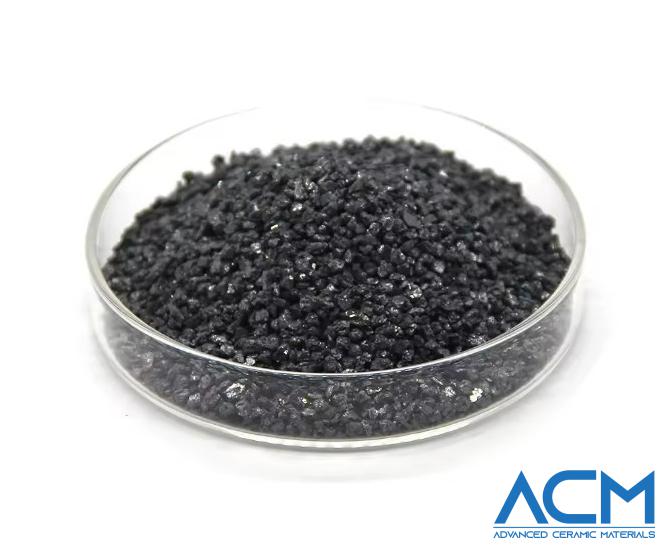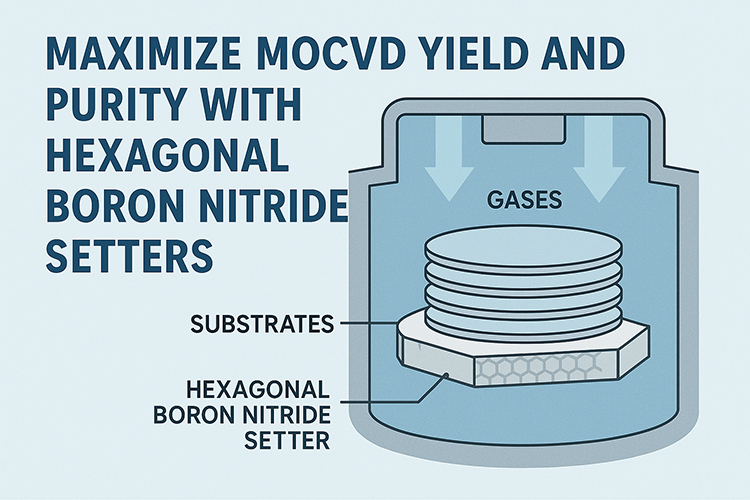Silicon Carbide (SiC) in Gas Sensors: Applications and Benefits
1. Introduction
Gas sensors are critical components used across a range of industries, including environmental monitoring, automotive emissions control, industrial safety, and healthcare. Their primary function is to detect the presence of specific gases in the atmosphere and provide real-time data that ensures safety, compliance, and efficiency. Common gases monitored include carbon monoxide, nitrogen oxides, methane, and volatile organic compounds (VOCs).
Traditional gas sensors, such as metal oxide semiconductor (MOS) sensors, often face significant limitations in terms of sensitivity, temperature stability, and response times. This has led to a search for alternative materials that can address these shortcomings. Silicon carbide (SiC), a wide-bandgap semiconductor material, has shown promising potential in overcoming these challenges due to its high thermal stability, fast response times, and exceptional chemical resistance.
This article explores the potential of SiC in gas sensor technologies, discussing its properties, working principles, advantages, and challenges, as well as its potential applications.
2. Basic Properties of Silicon Carbide (SiC)
Silicon carbide is a semiconductor material with a bandgap of approximately 3.26 eV, which is significantly higher than that of silicon (1.1 eV). This wide bandgap gives SiC its unique characteristics, making it suitable for high-performance applications. Some key properties of SiC include:
- High-temperature stability: SiC can operate at temperatures up to 900°C without degradation, making it ideal for high-temperature environments such as automotive engines or industrial processes.
- Chemical stability: SiC is highly resistant to chemical corrosion and oxidation, even in aggressive environments, which allows it to function in harsh chemical atmospheres without significant performance degradation.
- Electrical conductivity: SiC retains its excellent electrical properties even at elevated temperatures, ensuring reliable performance in gas sensing applications.
- Mechanical strength: SiC has high mechanical strength, which contributes to the durability and robustness of sensors made from this material.
![]()
In comparison to traditional sensor materials like metal oxides, SiC offers a range of advantages that allow sensors to operate reliably in demanding conditions.
3. Working Principle of SiC Gas Sensors
SiC-based gas sensors typically rely on the interaction between gas molecules and the SiC surface, leading to changes in the electrical properties of the material. These changes are detected and used to infer the concentration of specific gases. The general working principle of a SiC gas sensor is as follows:
-
Sensor structure: The sensor consists of a SiC semiconductor material, electrodes for measuring electrical properties, and often a catalytic layer that facilitates the chemical reaction between the target gas and the SiC surface. When gas molecules come into contact with the SiC surface, they react, leading to a change in the electrical resistance, capacitance, or other measurable properties of the material.
-
High-temperature operation: SiC gas sensors can operate at high temperatures, which is essential for applications like automotive exhaust monitoring or industrial processes. This capability allows the sensors to remain stable and accurate even under harsh operating conditions, such as those found in vehicle engines or manufacturing facilities.
-
Catalytic reactions: In some sensors, a metal catalyst is applied to the SiC surface to enhance the sensitivity and selectivity of the sensor. The catalyst helps facilitate the chemical reaction between the target gas and the SiC material, improving the sensor's overall performance, including its speed and accuracy in detecting gases.
The SiC-based sensor’s ability to operate at high temperatures while maintaining excellent performance is a key factor that sets it apart from other gas sensor technologies.
4. Advantages of SiC Gas Sensors
SiC gas sensors offer several significant advantages over traditional gas sensing technologies:
-
High-temperature tolerance: Unlike conventional gas sensors that may fail or become inaccurate at elevated temperatures, SiC sensors can operate reliably in temperatures as high as 900°C. This makes them ideal for use in automotive, aerospace, and industrial applications that require sensors capable of handling extreme heat.
-
Fast response times: SiC sensors are capable of rapidly detecting changes in gas concentrations, offering quicker response times compared to traditional metal oxide sensors. This is particularly useful in real-time monitoring applications where immediate detection of gas levels is crucial.
-
Enhanced sensitivity: SiC gas sensors exhibit higher sensitivity to gases at lower concentrations, which allows them to detect trace amounts of harmful or toxic gases. This is essential for applications such as environmental monitoring, industrial safety, and detecting pollutants in exhaust gases.
-
Durability and longevity: SiC’s high resistance to thermal stress, chemical corrosion, and mechanical wear makes it highly durable. SiC-based gas sensors are less prone to degradation over time, ensuring a longer lifespan and reducing the frequency of sensor replacements.
These advantages make SiC a highly attractive material for next-generation gas sensors that require high stability, sensitivity, and long-term reliability in challenging environments.
5. Gas Detection and Sensor Accuracy
Accurate gas detection is essential for ensuring the safety and performance of systems that rely on gas sensors. SiC-based gas sensors are highly effective at detecting a wide range of gases, but certain challenges remain in ensuring the accuracy and reliability of measurements.
-
Gas specificity: Identifying and distinguishing between various gases in complex mixtures can be challenging. SiC sensors may experience interference from other gases or environmental factors, leading to reduced specificity and accuracy. However, the use of advanced signal processing techniques and sensor arrays can help mitigate this issue by providing more detailed and reliable readings.
-
Temperature and environmental effects: While SiC sensors can operate at high temperatures, variations in temperature, humidity, and other environmental conditions can affect their performance. Compensation techniques, such as the integration of temperature and humidity sensors, are used to account for these factors and improve the accuracy of gas detection.
-
Signal processing: Advanced signal processing techniques, including the use of machine learning algorithms, can enhance the accuracy of SiC-based gas sensors. These techniques help identify and filter out noise from the sensor’s output, making it easier to identify and quantify gases in real time. The combination of SiC sensors and advanced data analysis provides a robust solution for accurate gas detection in complex environments.
6. Conclusion
Silicon carbide (SiC) is a promising material for the development of advanced gas sensors. Its unique properties, such as high-temperature stability, chemical resistance, and fast response times, make it an ideal choice for applications in industries that require robust and reliable gas detection systems. SiC-based gas sensors offer significant advantages in terms of sensitivity, durability, and performance, making them suitable for applications in automotive emissions monitoring, industrial safety, environmental monitoring, and beyond.
While there are still challenges to overcome, such as improving gas specificity and compensating for environmental effects, the future of SiC gas sensors looks bright. Ongoing research and development in this field are expected to lead to more accurate, reliable, and cost-effective solutions for gas detection, benefiting industries that rely on precise monitoring of gases for safety, health, and environmental protection.
As the demand for more advanced and efficient gas sensors continues to grow, SiC is likely to play a crucial role in shaping the next generation of gas sensing technologies.
Thanks for reading our articles and we hope that you now know more about silicon carbide ceramic after reading this article. If you want to know more about SiC ceramic or other advanced ceramic materials, we would like to recommend you visit http://www.preciseceramic.com for more information.
{{item.content}}
LEVE A REPLY
{{item.children[0].content}}
{{item.content}}
LEAVE A REPLY
SUBSCRIBE OUR NEWSLETTER
- Boron Nitride in Cosmetics: Enhancing Performance and Sensory Appeal
- Maximize MOCVD Yield and Purity with Hexagonal Boron Nitride Setters
- What Are the Advantages and Uses of Boron Nitride Ceramic Sheet?
- The Compression Annealing Advantage for Pyrolytic Boron Nitride
- Beyond Insulation: The Surprising Spectrum of Ceramic Thermal Conductivity













